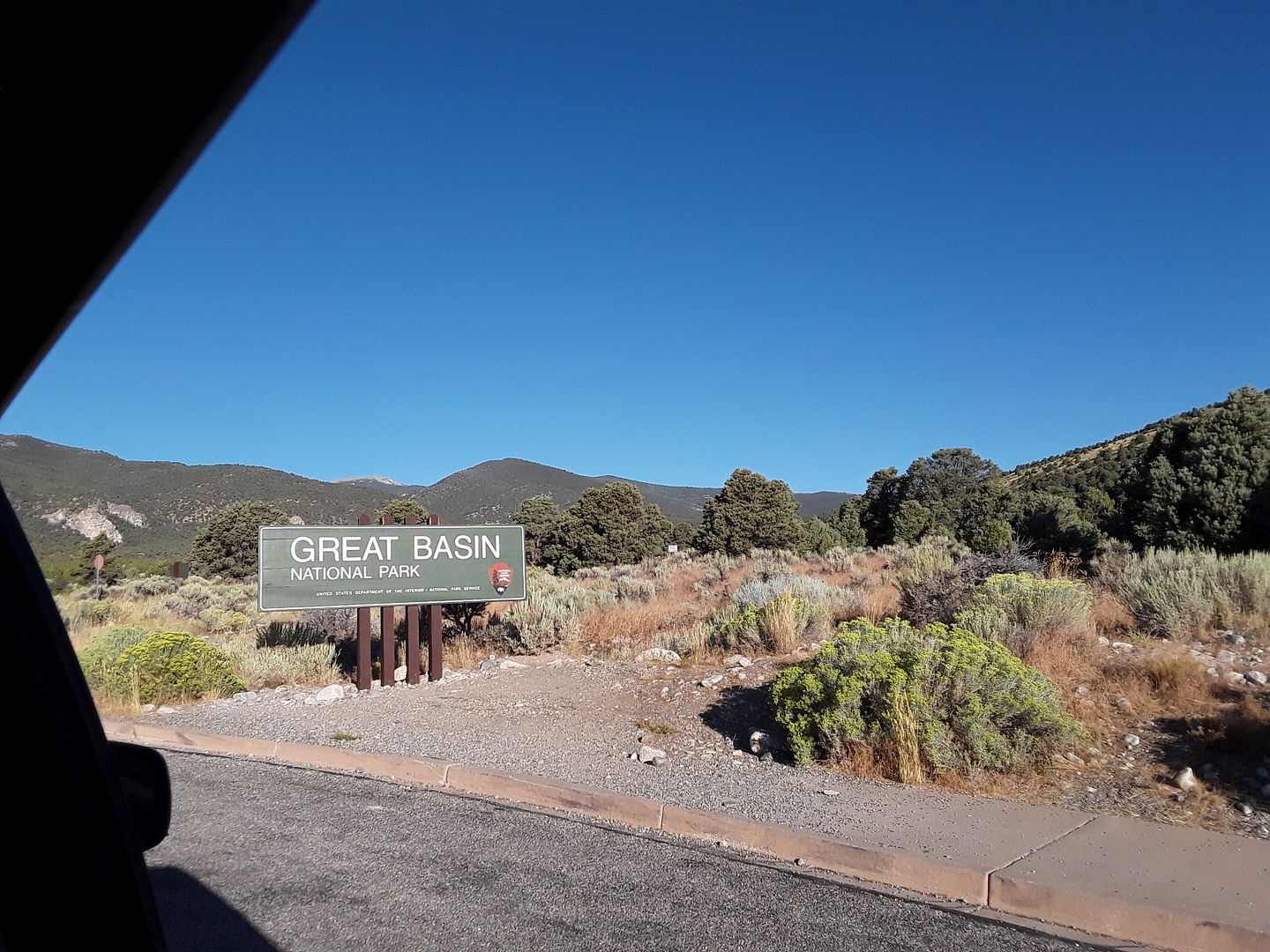
It just took me eight years to get there.
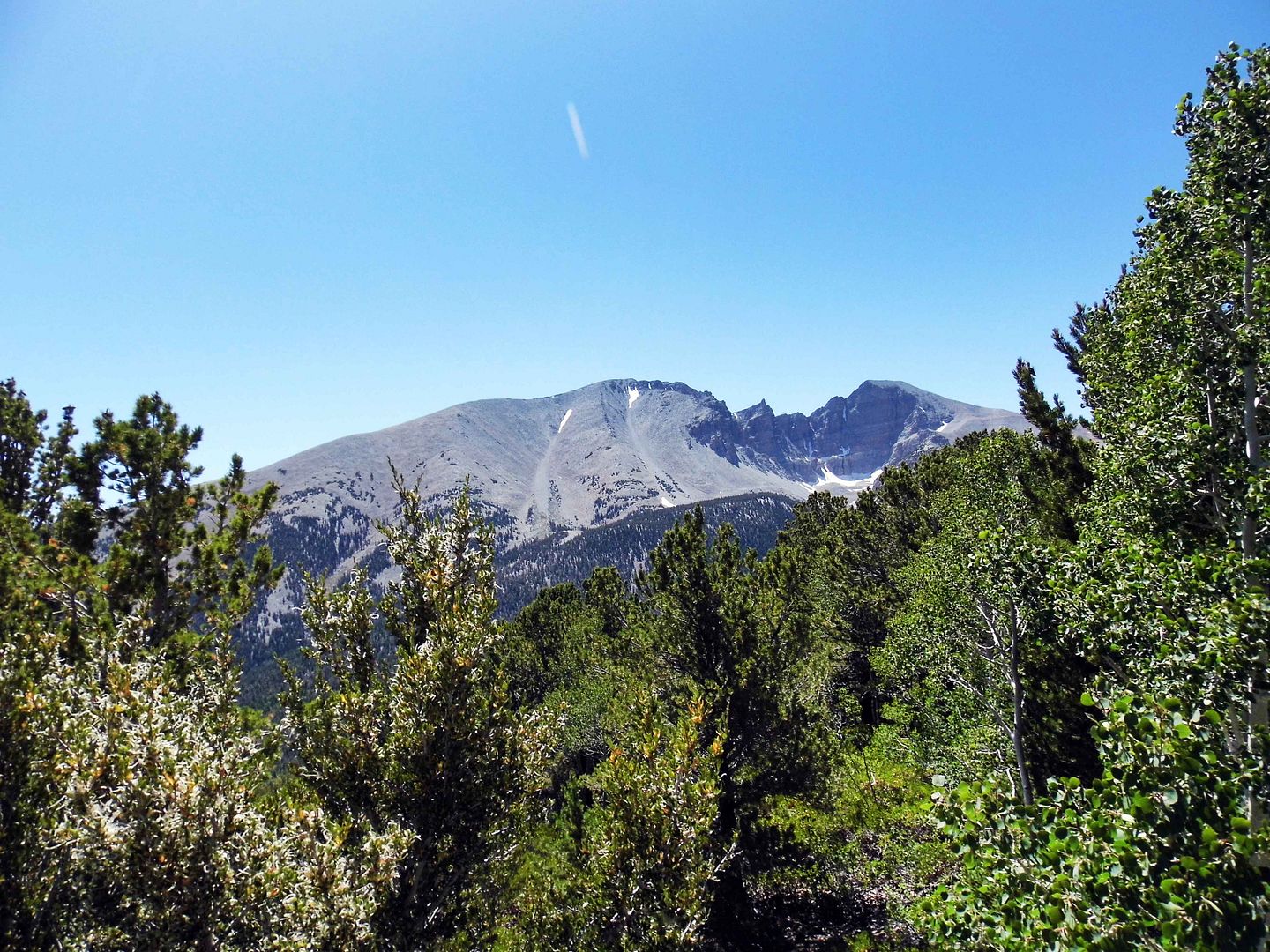
I'd planned on making the drive from Ely, Nevada last year, when I was on my traincation...
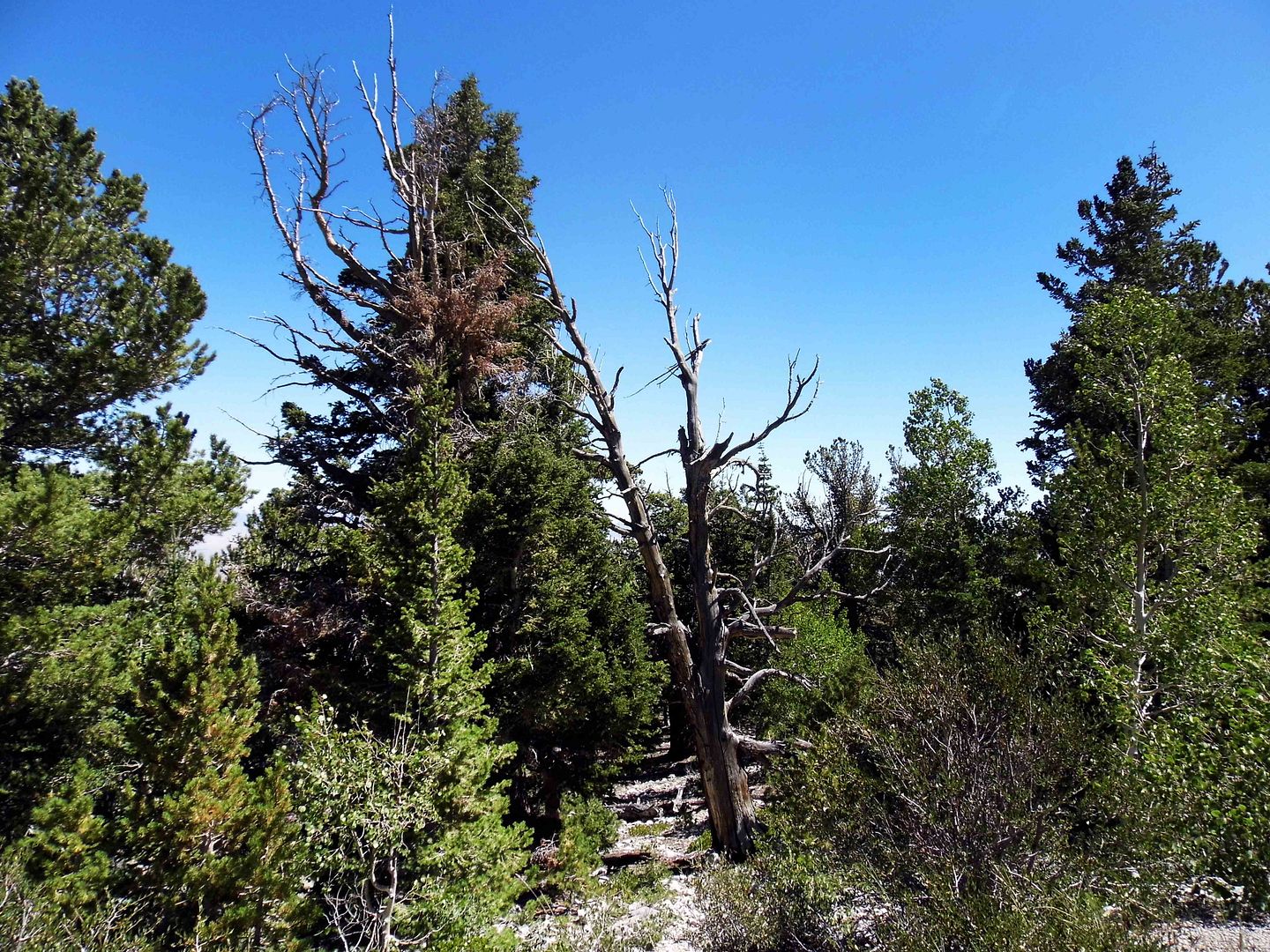
...but the Universe had other plans for me...

...and saddled me with some kind of viral infection that knocked me down for the count (and that I barely survived long enough to make the drive to Vegas for my flight back home).
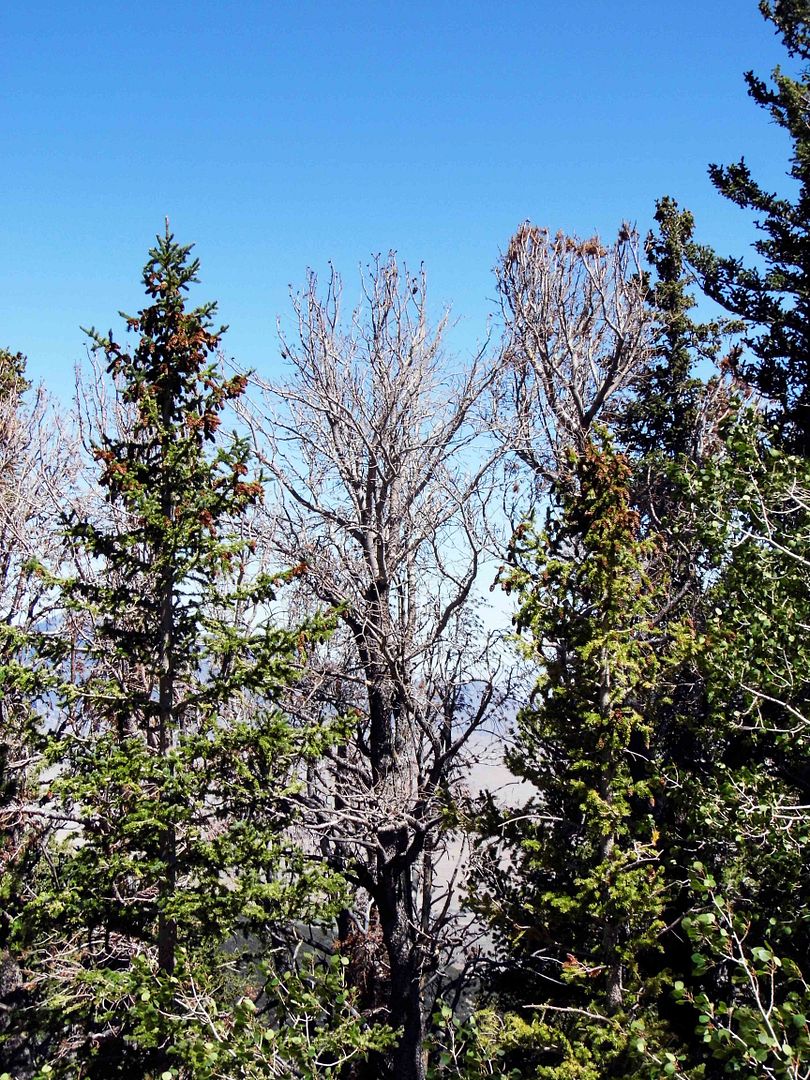
This time, I was with friends who were doing the driving—and it's a good thing, because as we drove up to the Wheeler Peak vista point and parked at the Summit Trailhead for an easy hike to Stella Lake, this time altitude sickness set in.
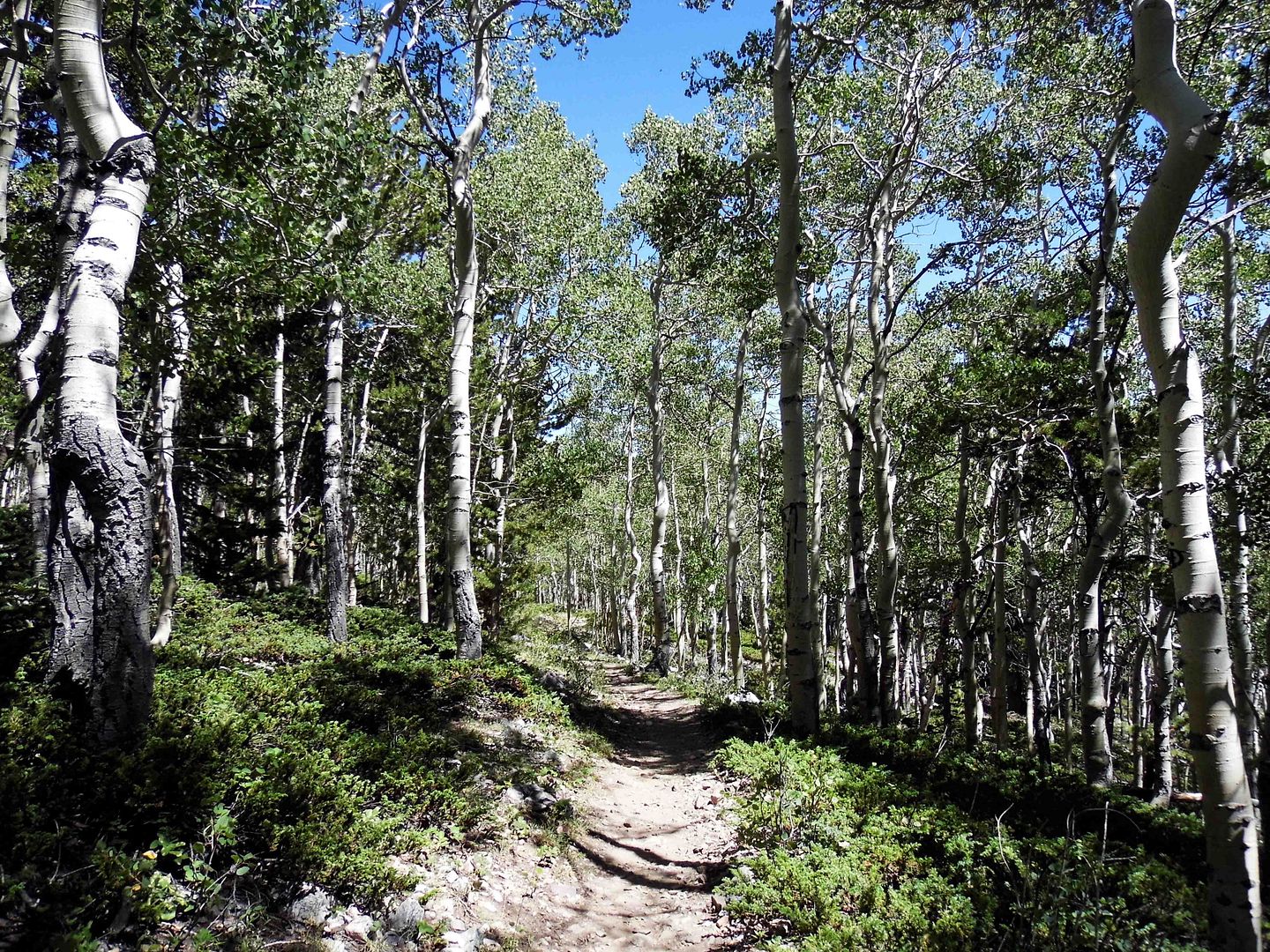
I tried taking my time through the grove of Quaking Aspen trees (Populus tremuloides)—but at nearly 10,000 feet of elevation, it was too much for me.
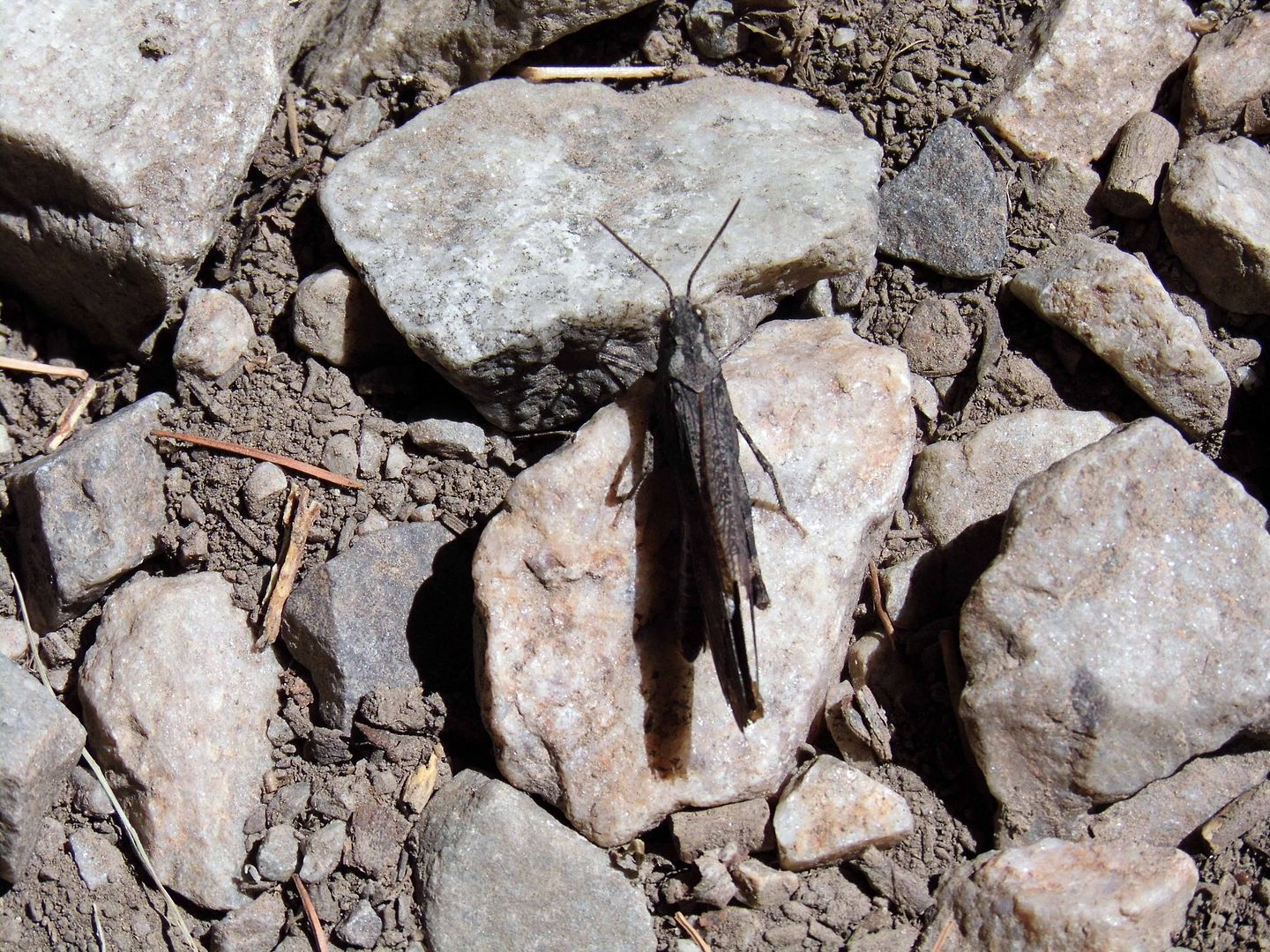
My arms felt light lead as I held up my camera to try to catch a speckle-winged rangeland grasshopper (Arphia conspersa) showing the green underside of its wings.
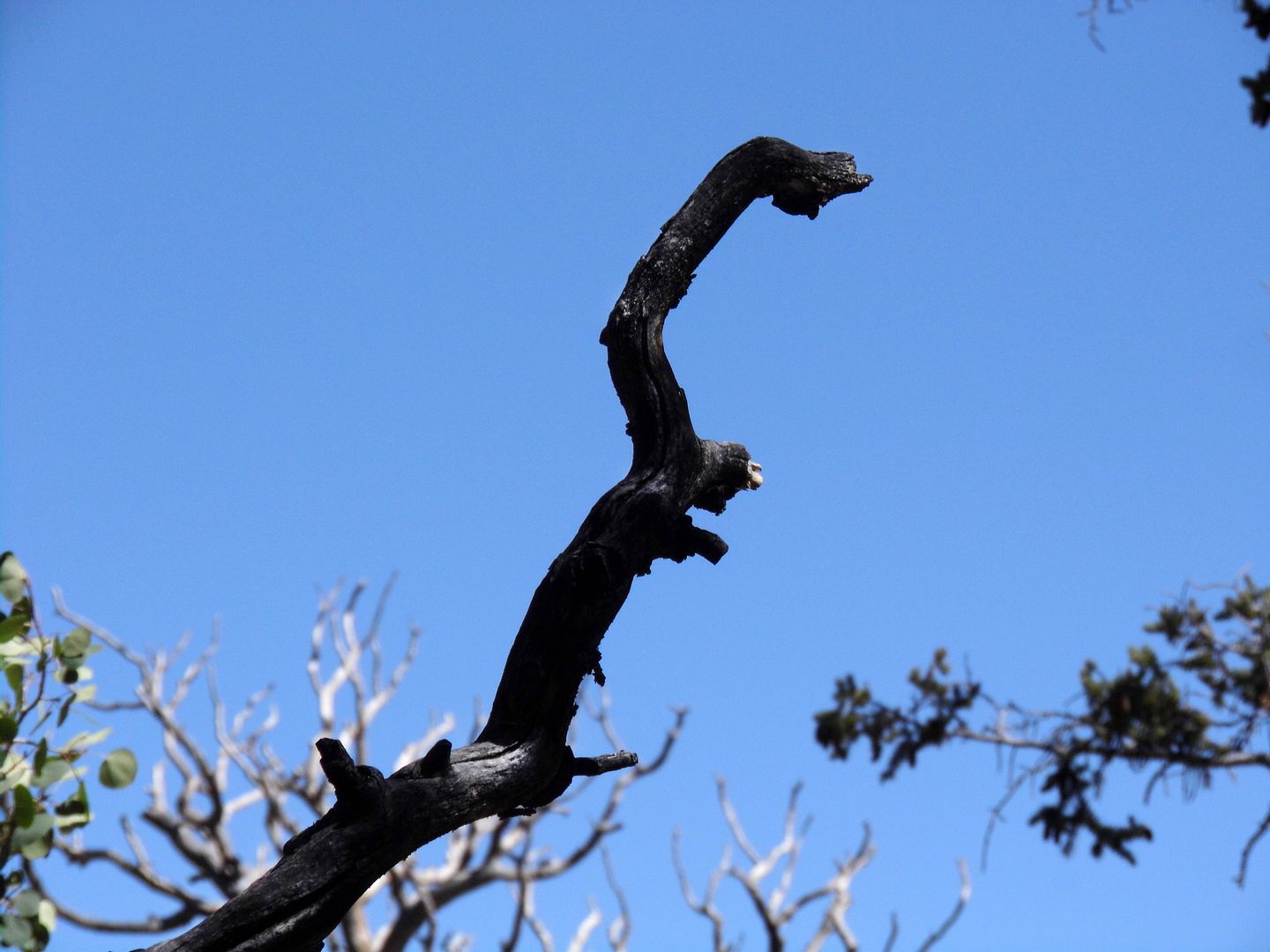
There are bristlecone pines up there—and I spotted a few telltale bristled cones on the ground—but we were too far from any official groves to reach and explore them.
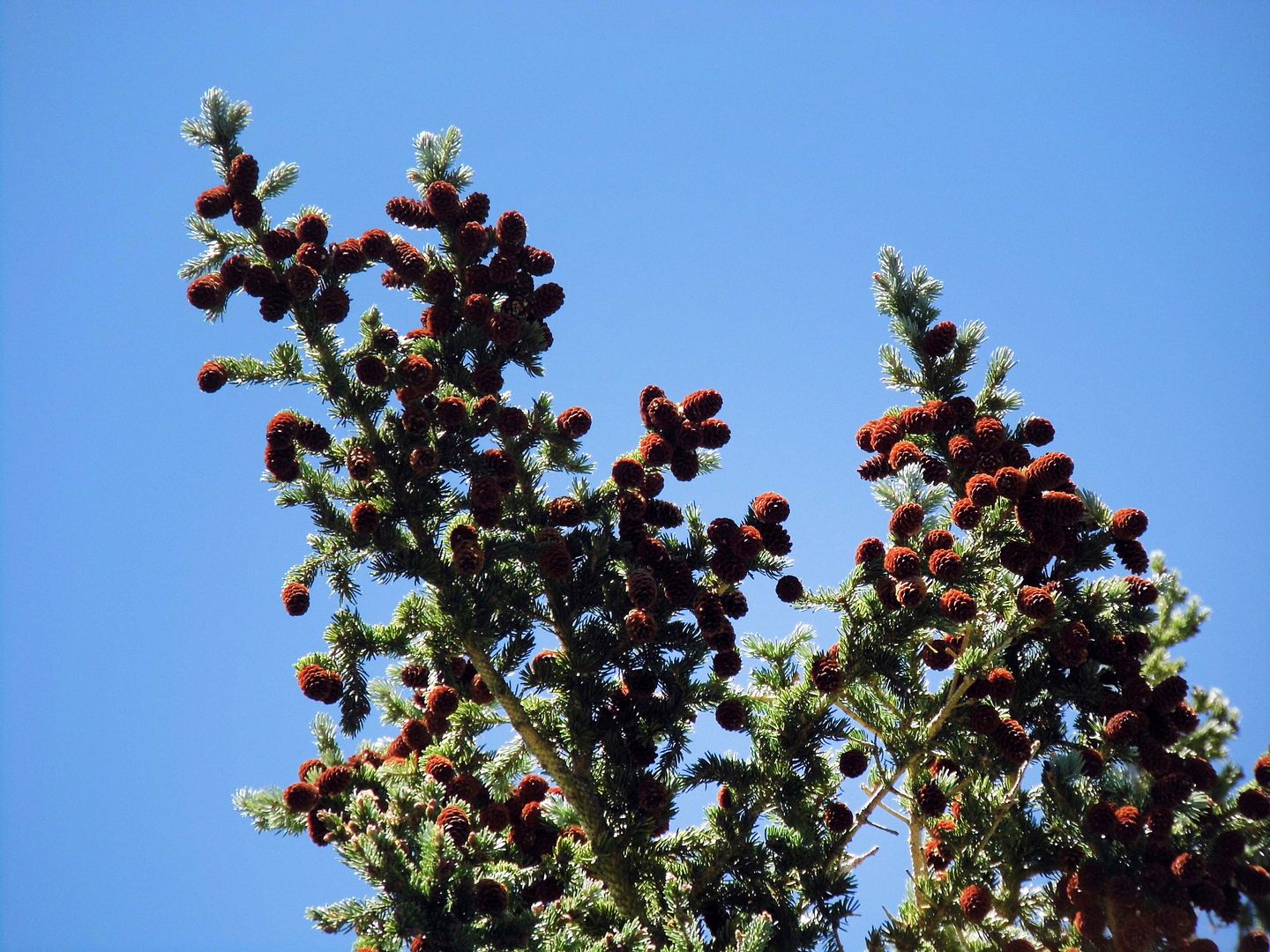
I quickly succumbed to the altitude sickness anyway, lying down in the backseat of our van and gasping for air.
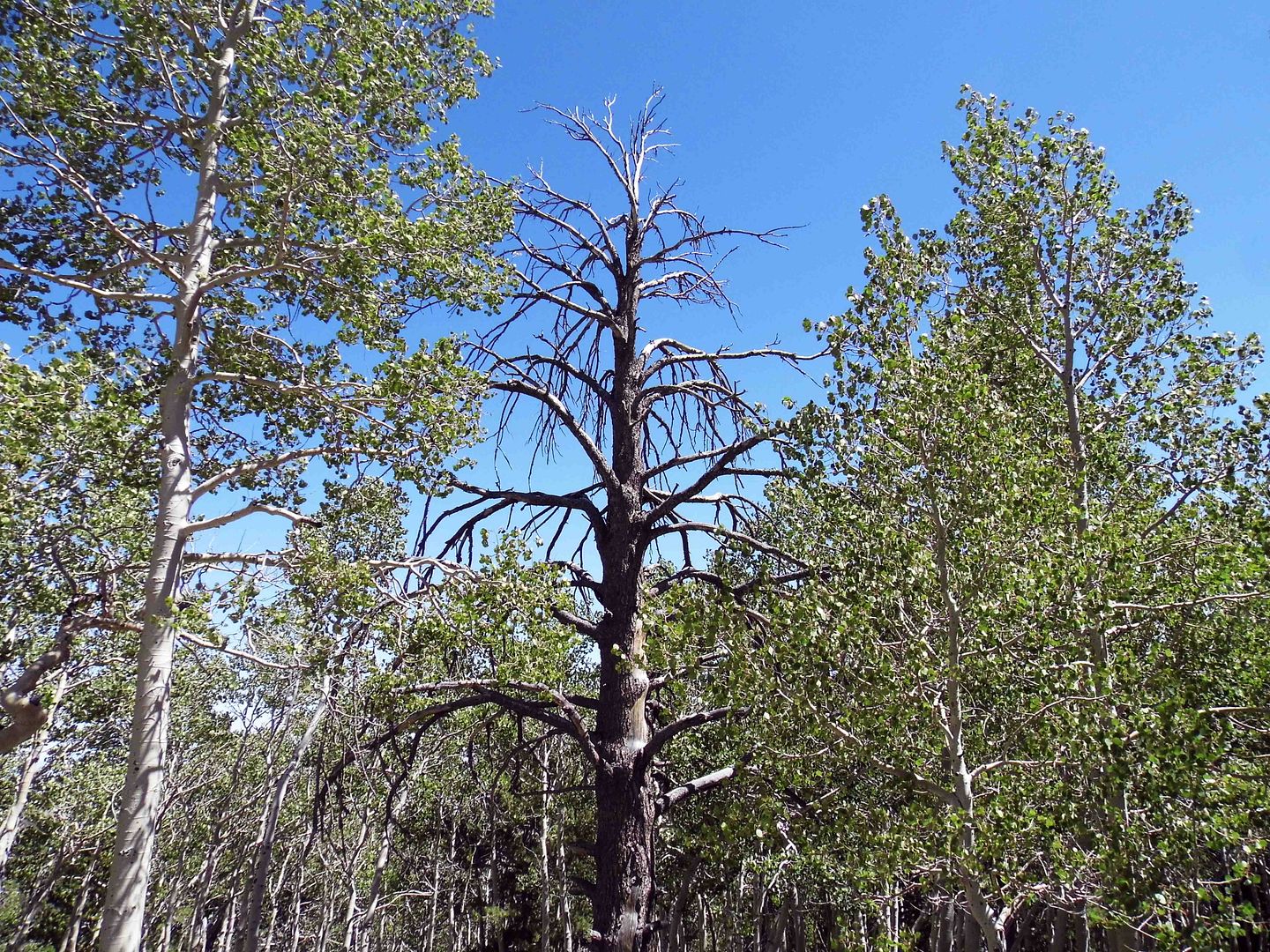
Sometimes I am too delicate for the adventures I'd like to do. But a fellow hiker on the trail said my reaction was common among those who live at sea level.
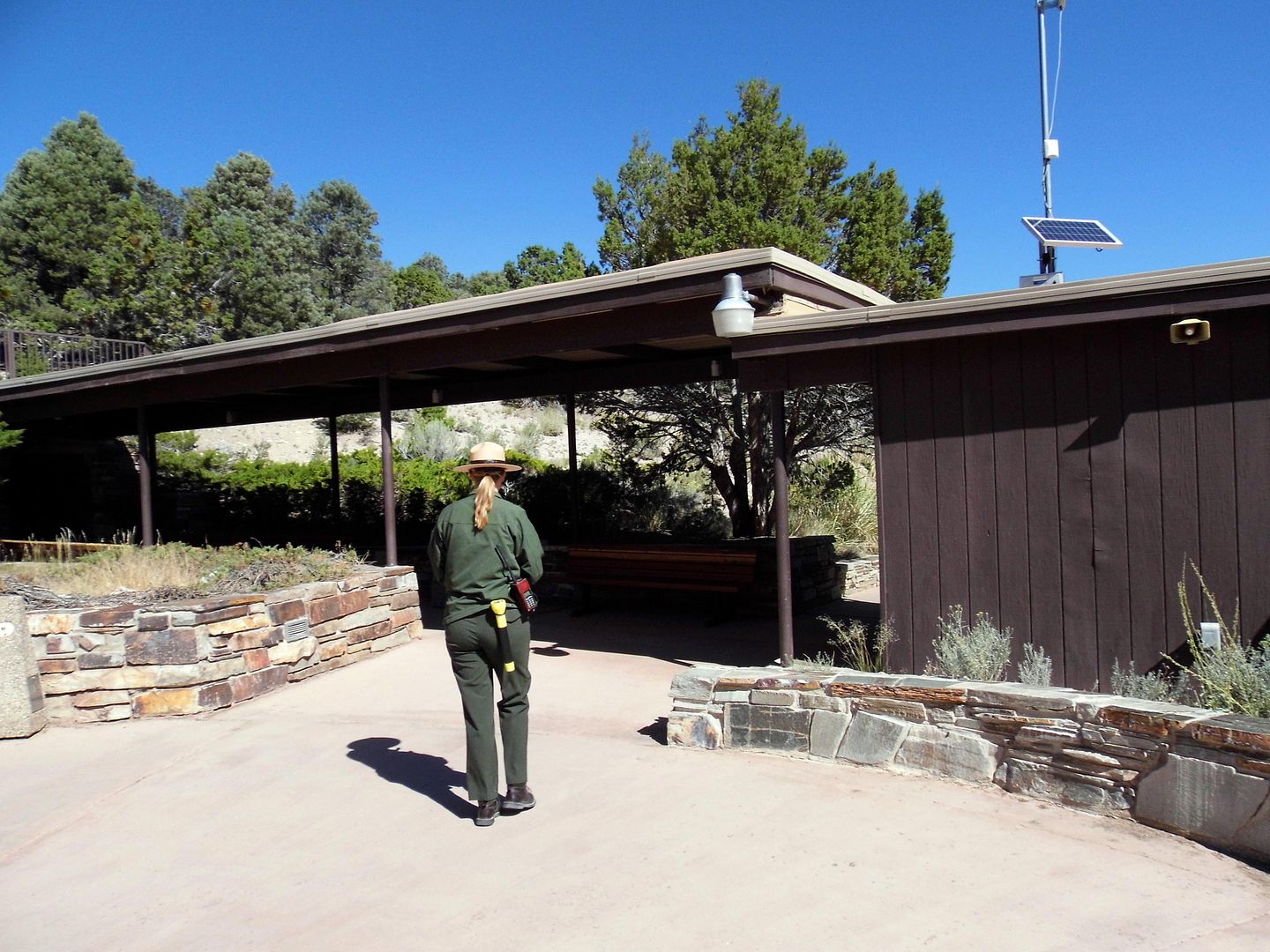
Fortunately, I felt much more comfortable at the 7000-foot elevation at the entrance of Lehman Cave.

As we descended into the "rooms" and passageways once formed by water, starting with the Gothic Palace...
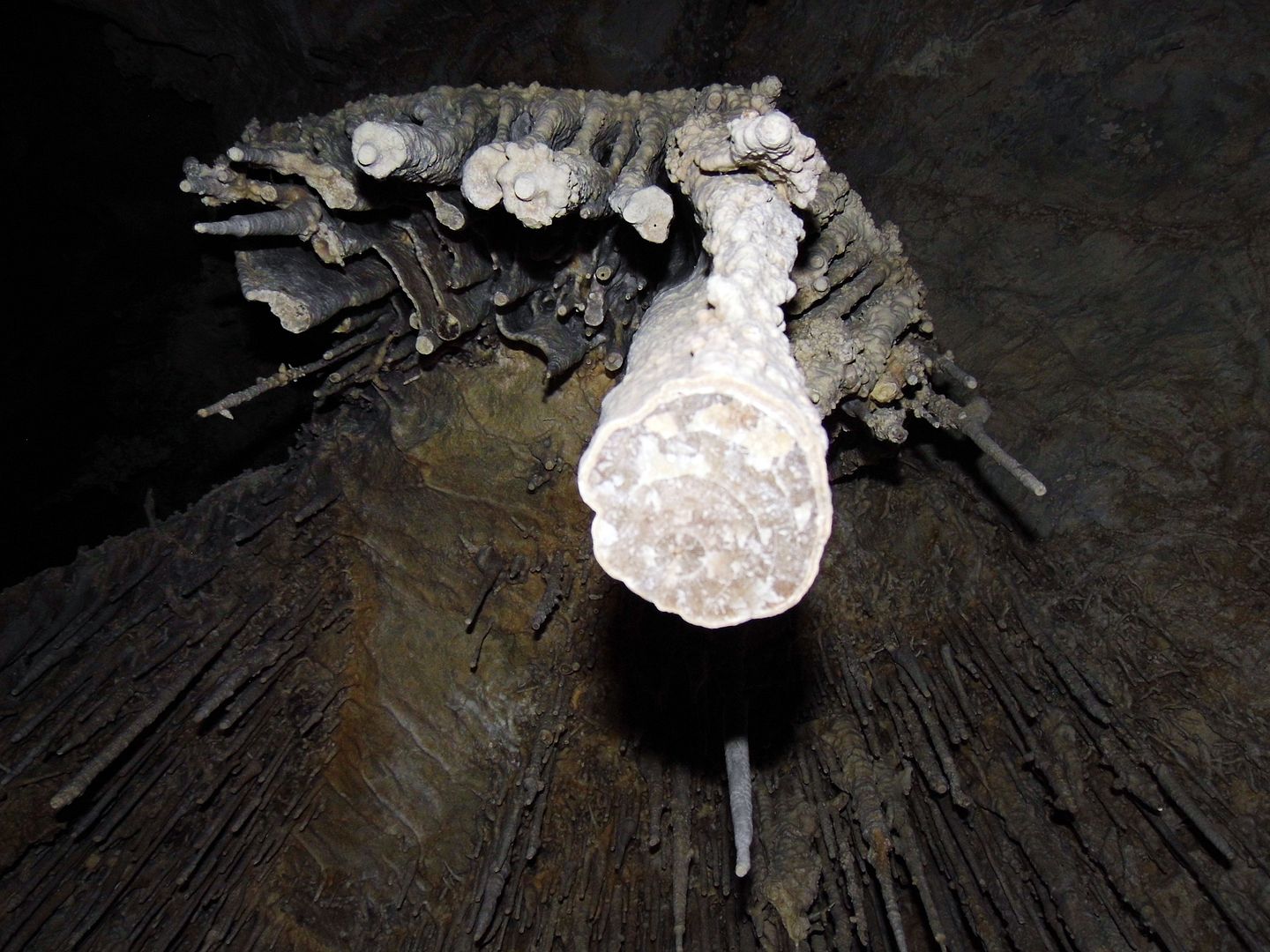
...I could admire the crystallized stalactites without distraction.
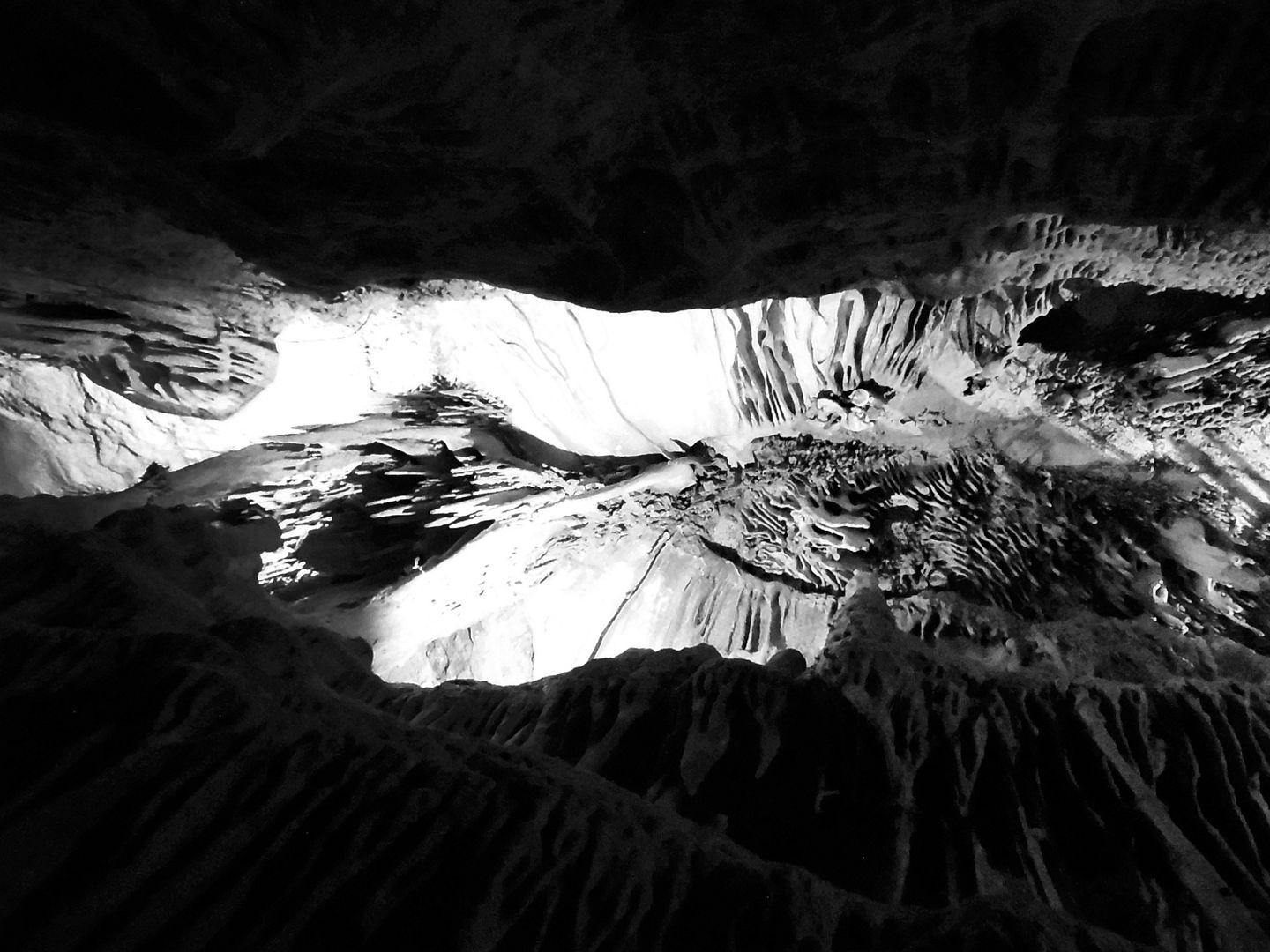
I could gaze up from the Music Room's "pipe organ," 125 feet below the surface, with a 51-foot "ceiling," feeling dizzy and short of breath only in response to its beauty.
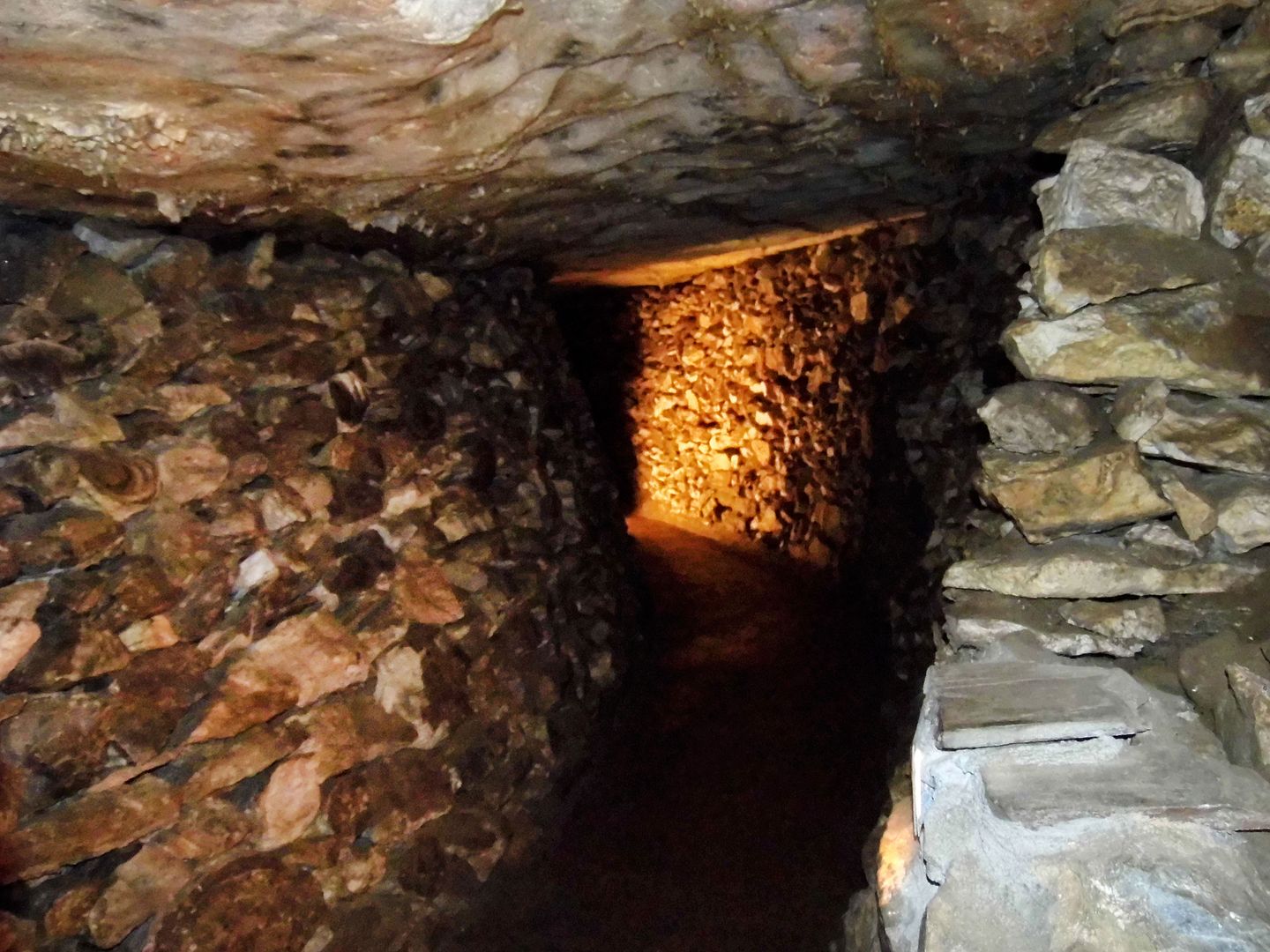
Unfortunately, to accommodate tourists like myself, much of the rock (including stalactites and stalagmites) was blasted ages ago and reused to build walls, doorways, and benches (including those of the "Panama Canal").
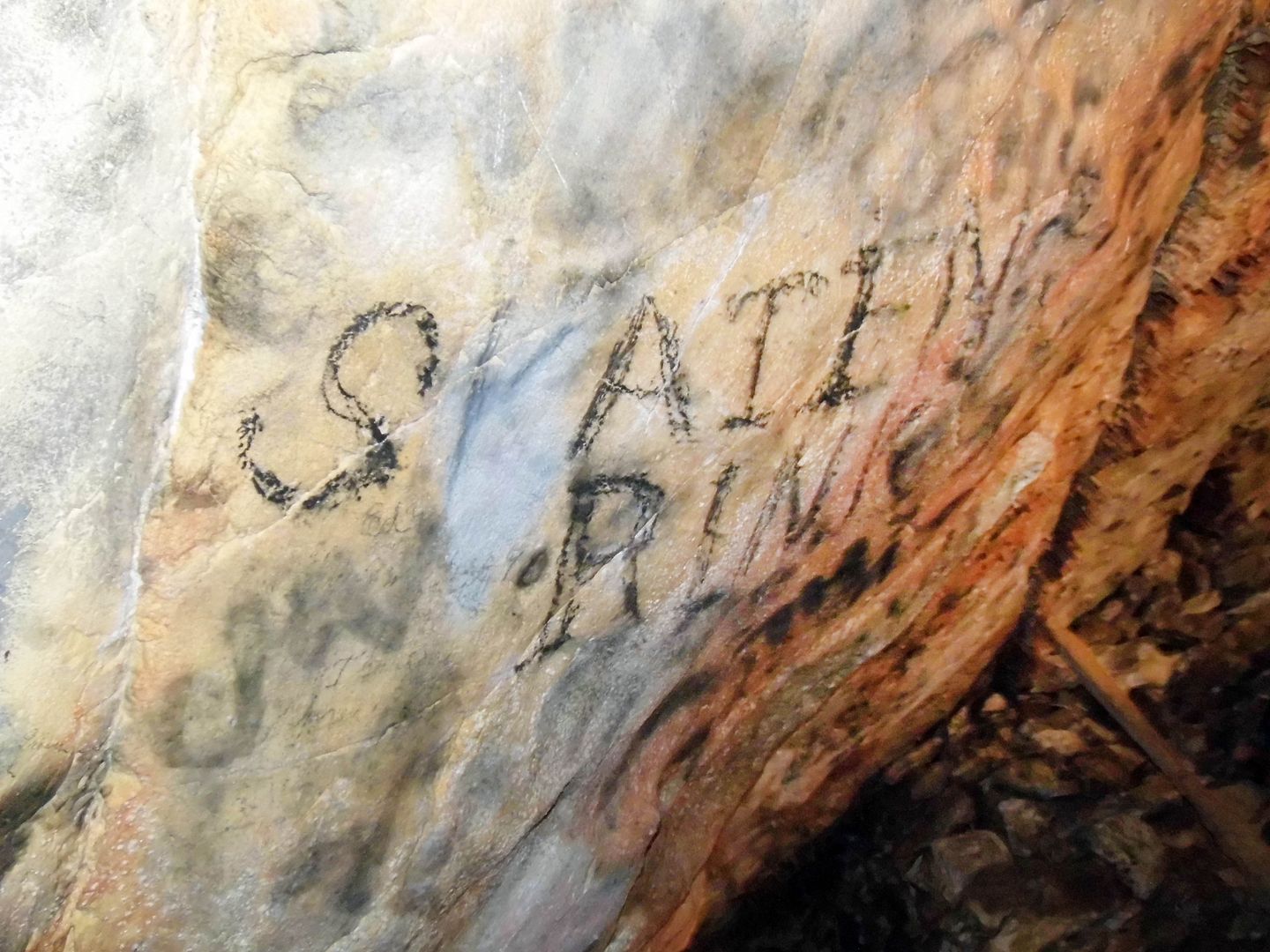
In an event space once called the "Skating Rink"...
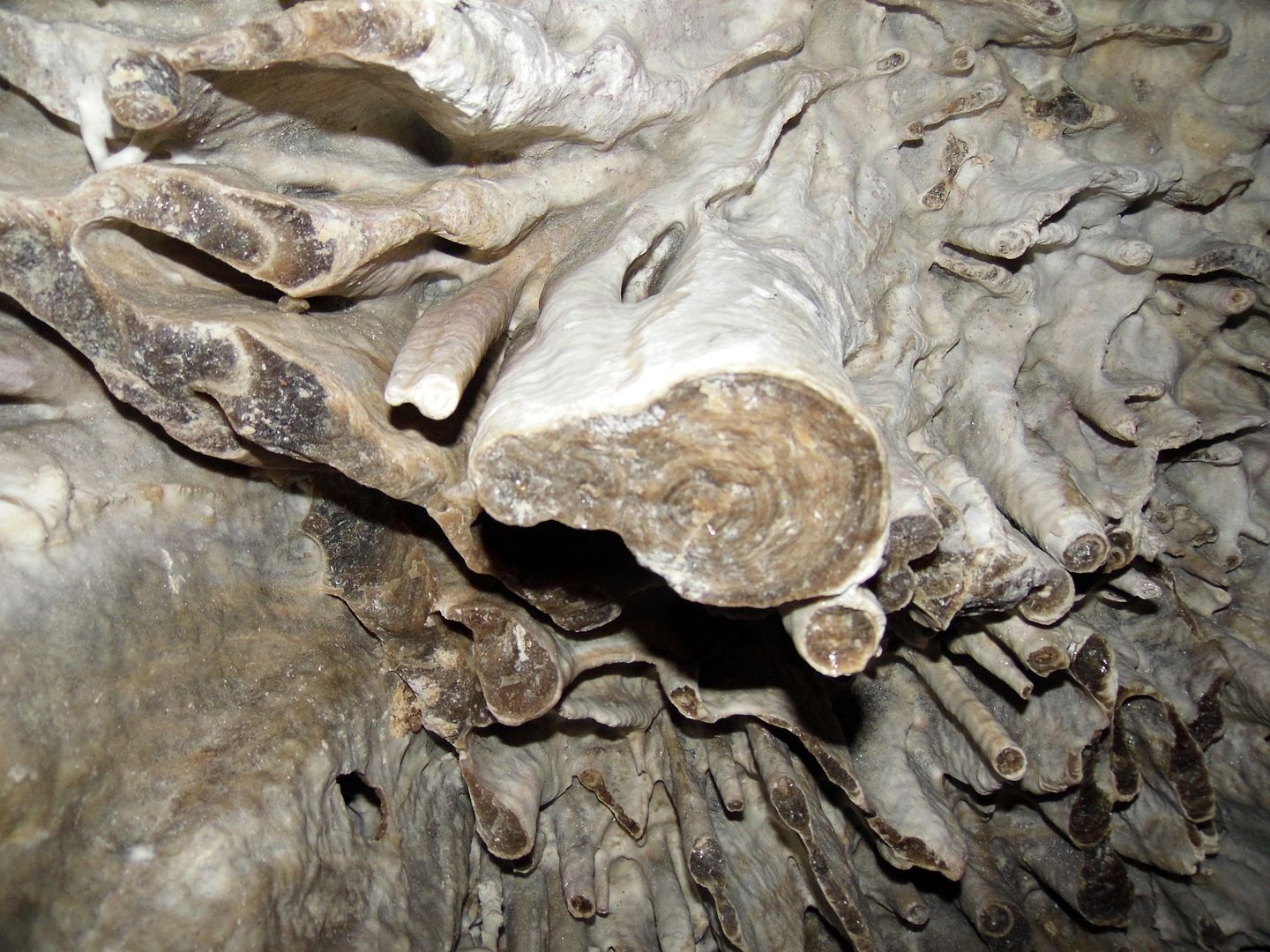
...the points of stalactite formations were chopped off so as not to stab anybody in the head (or poke their eye out).
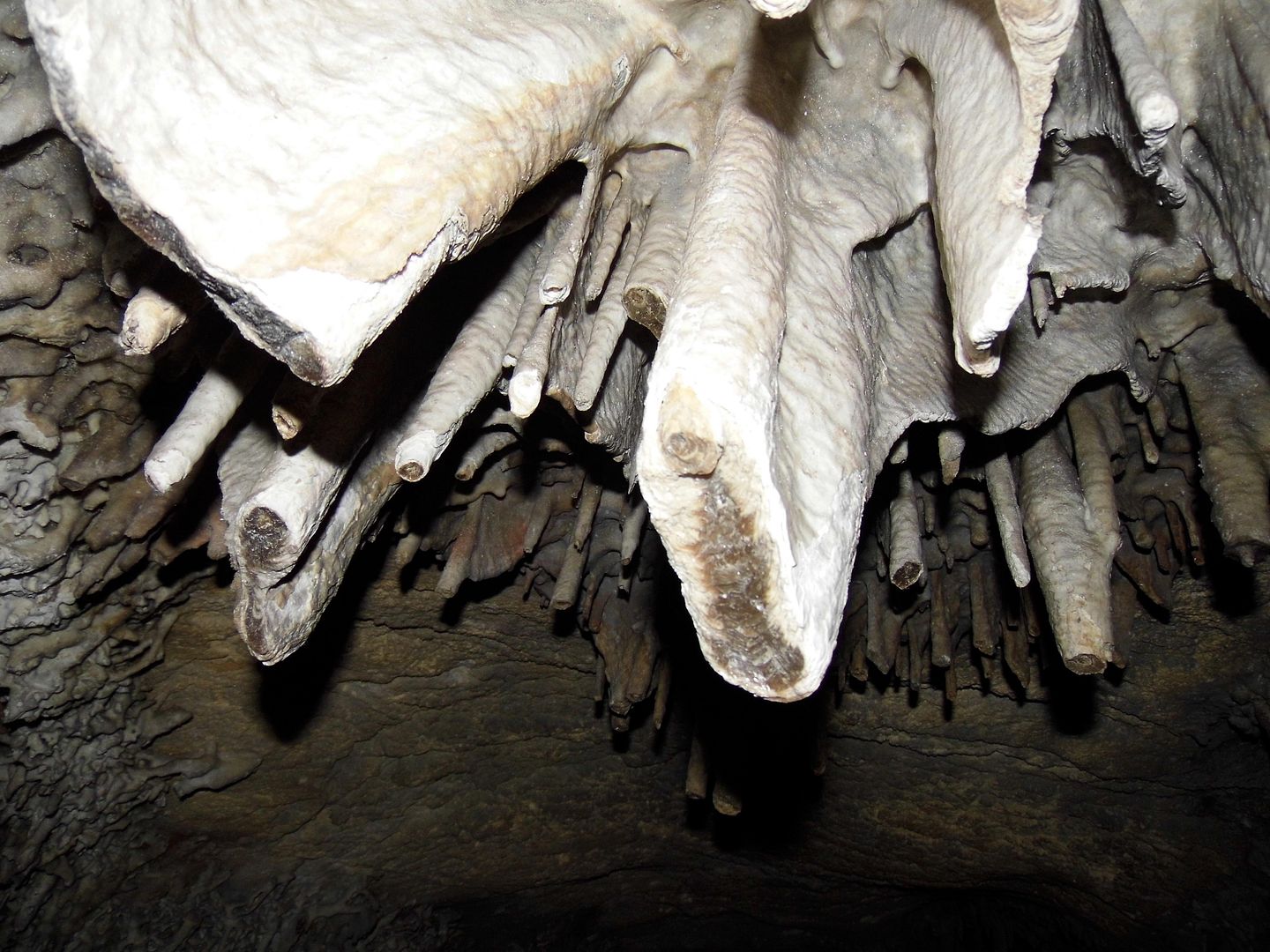
The only other way in was a belly crawl through a passage known as "Fat Man's Misery."
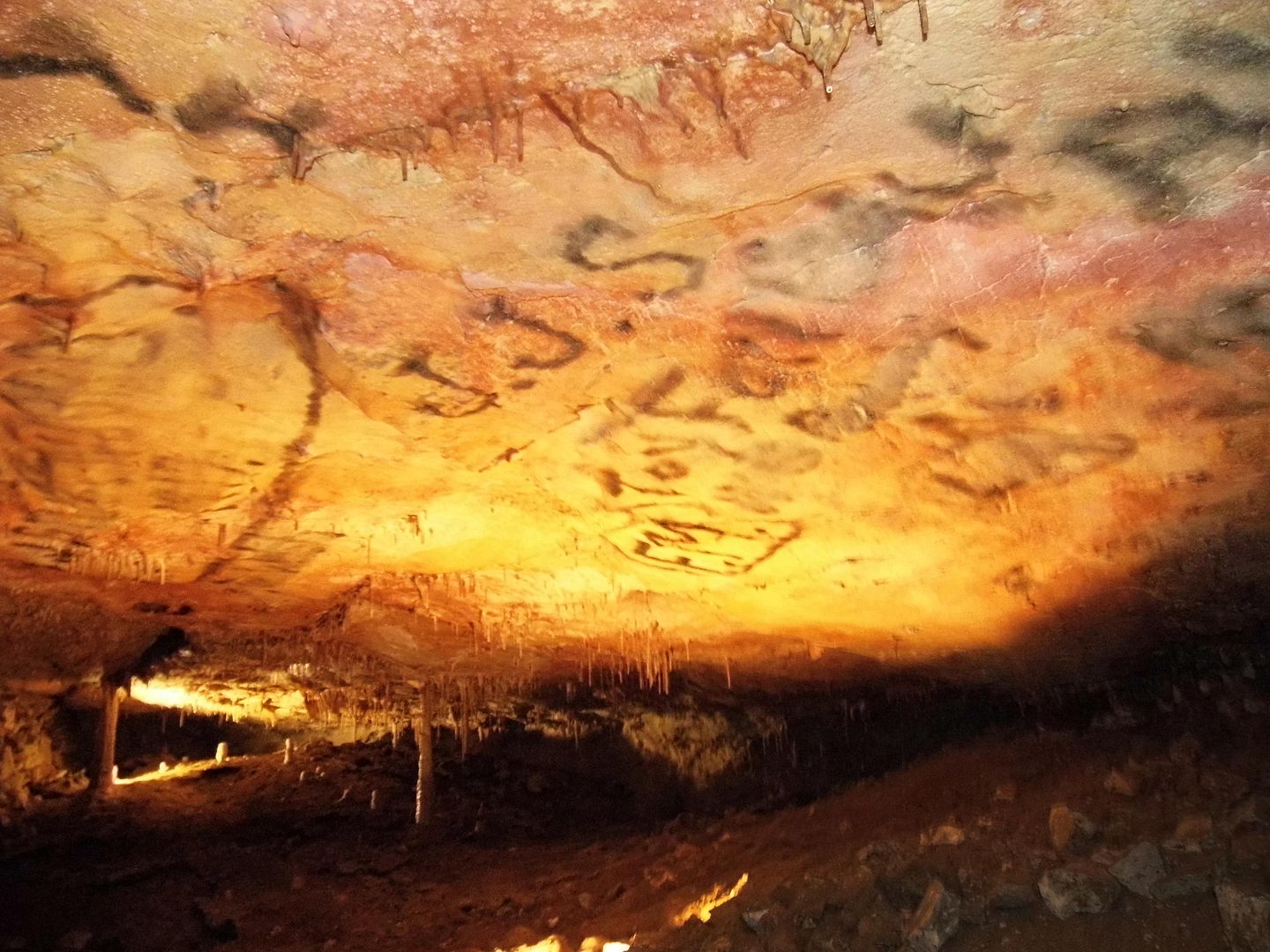
It's now called the "Inscription Room," in honor of the names and initials written on or burned into the ceiling with graphite, charcoal, or soot—not the marks of any First Nations tribe, but of attendees on Absalom Lehman's tours
from 1885 to 1892.
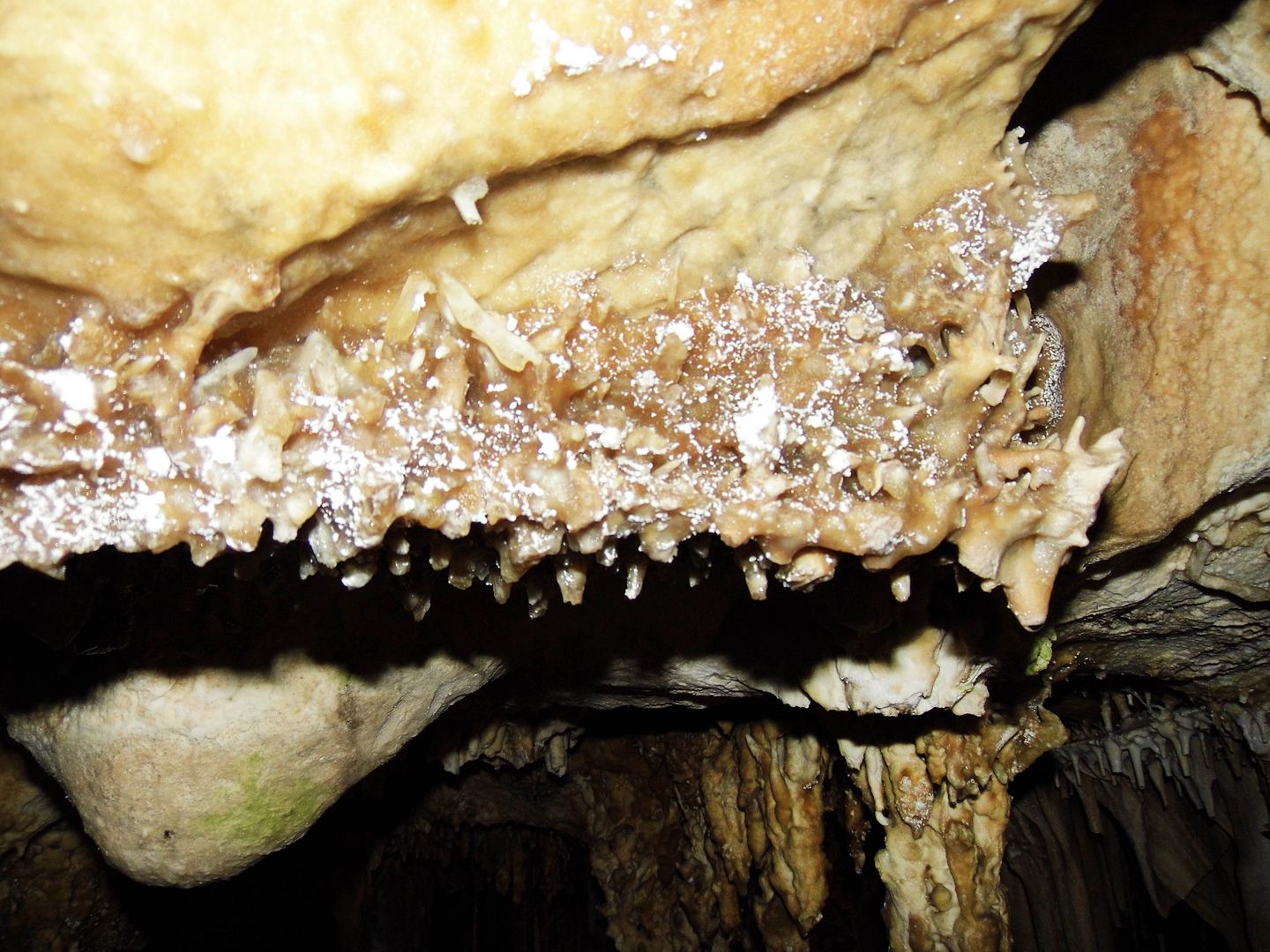
Back then, it was known as “Lehman’s Wonderful Cave.” And although well-meaning stewards have tried to scrub some of the signatures off, they're now considered a protected cultural resource.
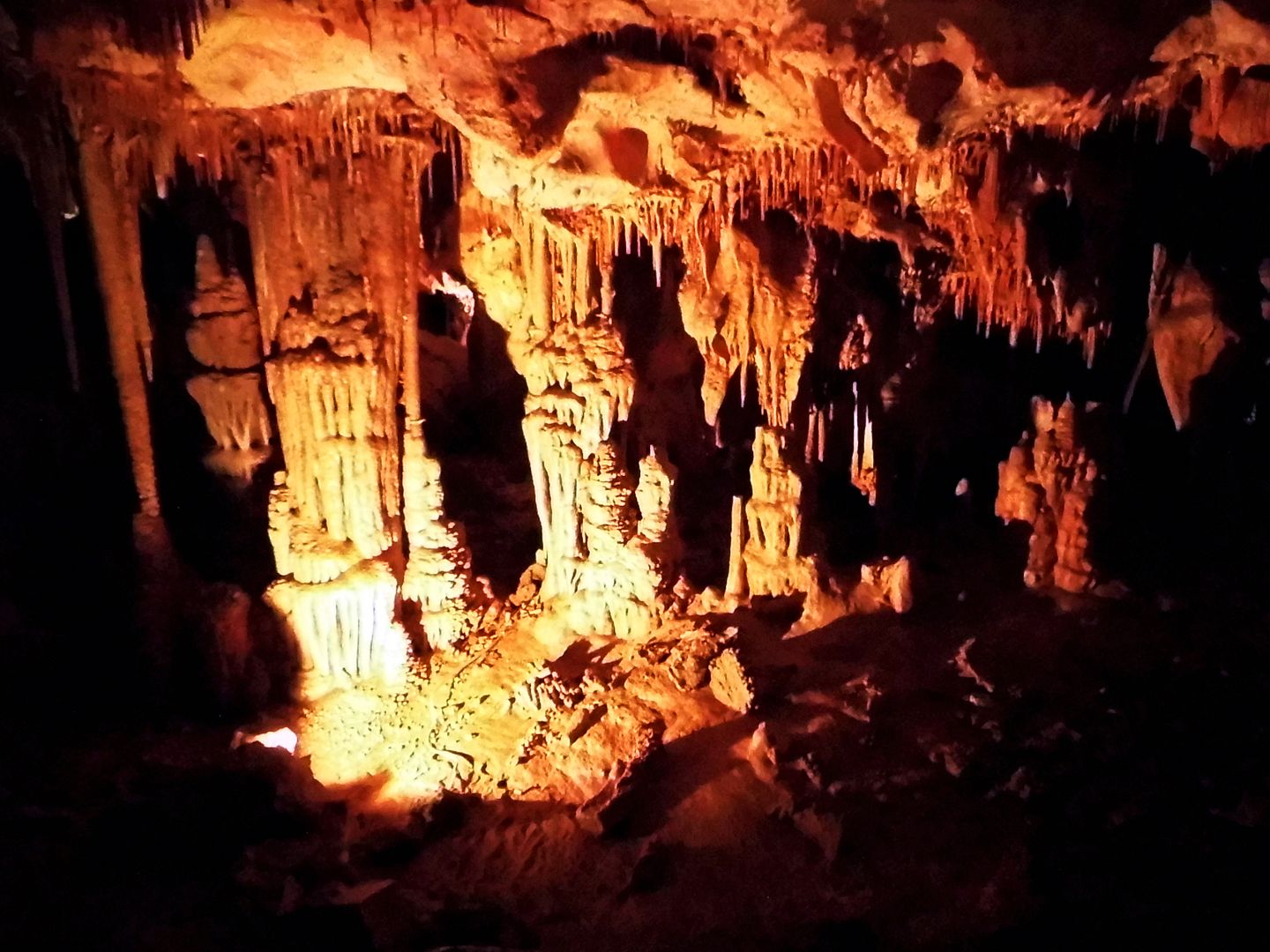
That being said, we were not welcome to add our own inscriptions, and instead were shuffled off through the Cypress Swamp and on to the Grand Palace...
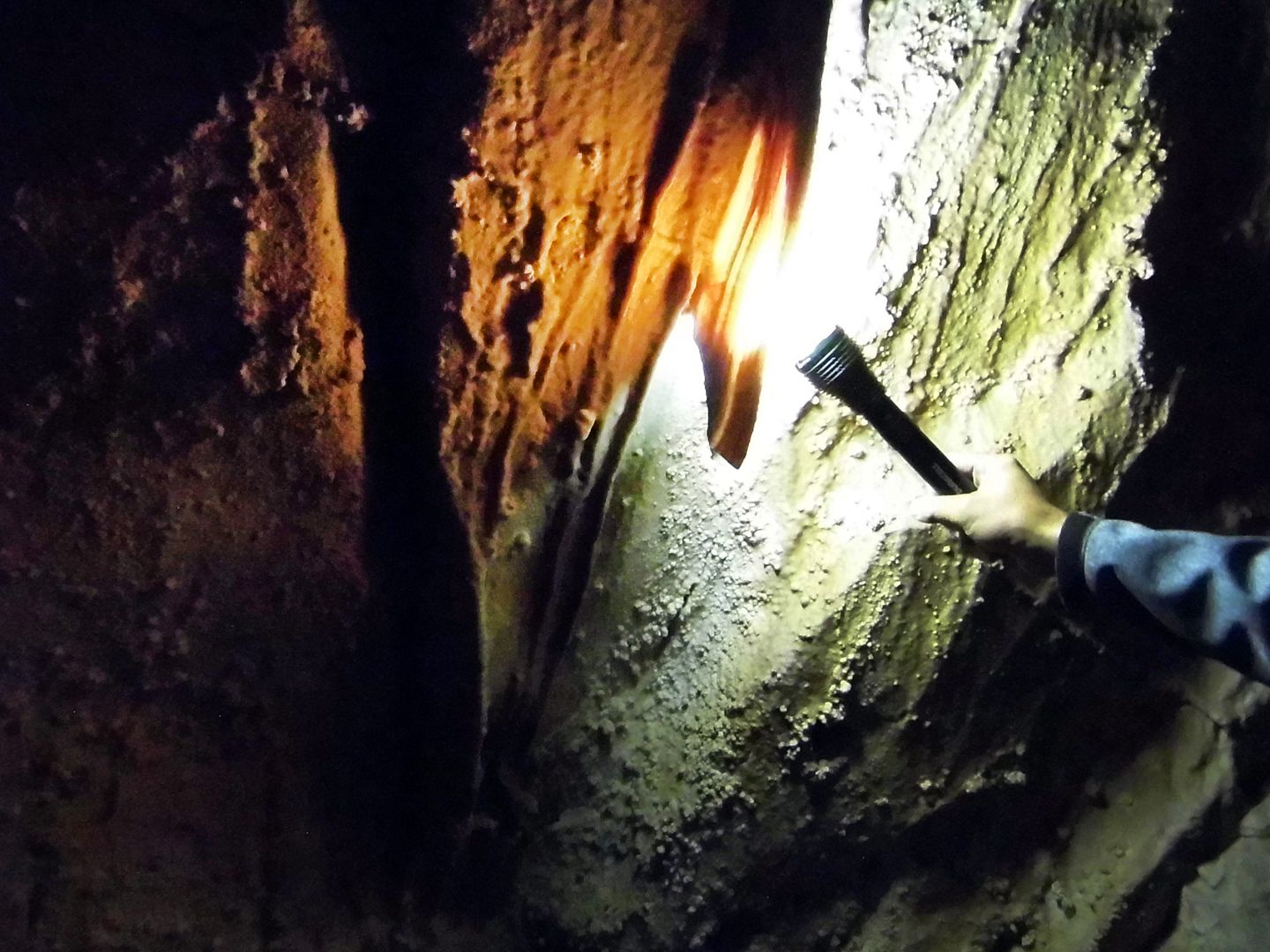
...where we spent a lot of time admiring a marbled formation known as "cave bacon."
Since its discovery by white settlers, Lehman Caves has fascinated people so much that they've thrown parties—and even weddings—down there.
In the mid-1960s, the Army Corps of Engineers designated a room specifically for civil defense shelter use, stockpiling two weeks' worth of rations that included tinned crackers, water cans, medical supplies, and radiation monitoring equipment.
But the cave-dwelling packrats had a field day with the supplies.
And by 1979, the rations hadn't been needed—so they were removed, unused, as efforts shifted to conserving the caves rather than using them for government purposes.
At a constant 50 degrees F, it's certainly comfortable enough down there for hiding out.
And as the longest known cave in Nevada, there'd be plenty of room.
It's no wonder they don't let you down there on your own. You'd get lost. And maybe consumed by bats or pseudoscorpions.
It's worth making the advance reservation for the 90-minute tour—or, in our case, showing up at 7 a.m. to try to get same-day standby tickets.
Related Posts:
The Impersistence of Memory: A Return to the Reopened Mitchell Caverns
Alone in A Crowd, Naturally.

No comments:
Post a Comment